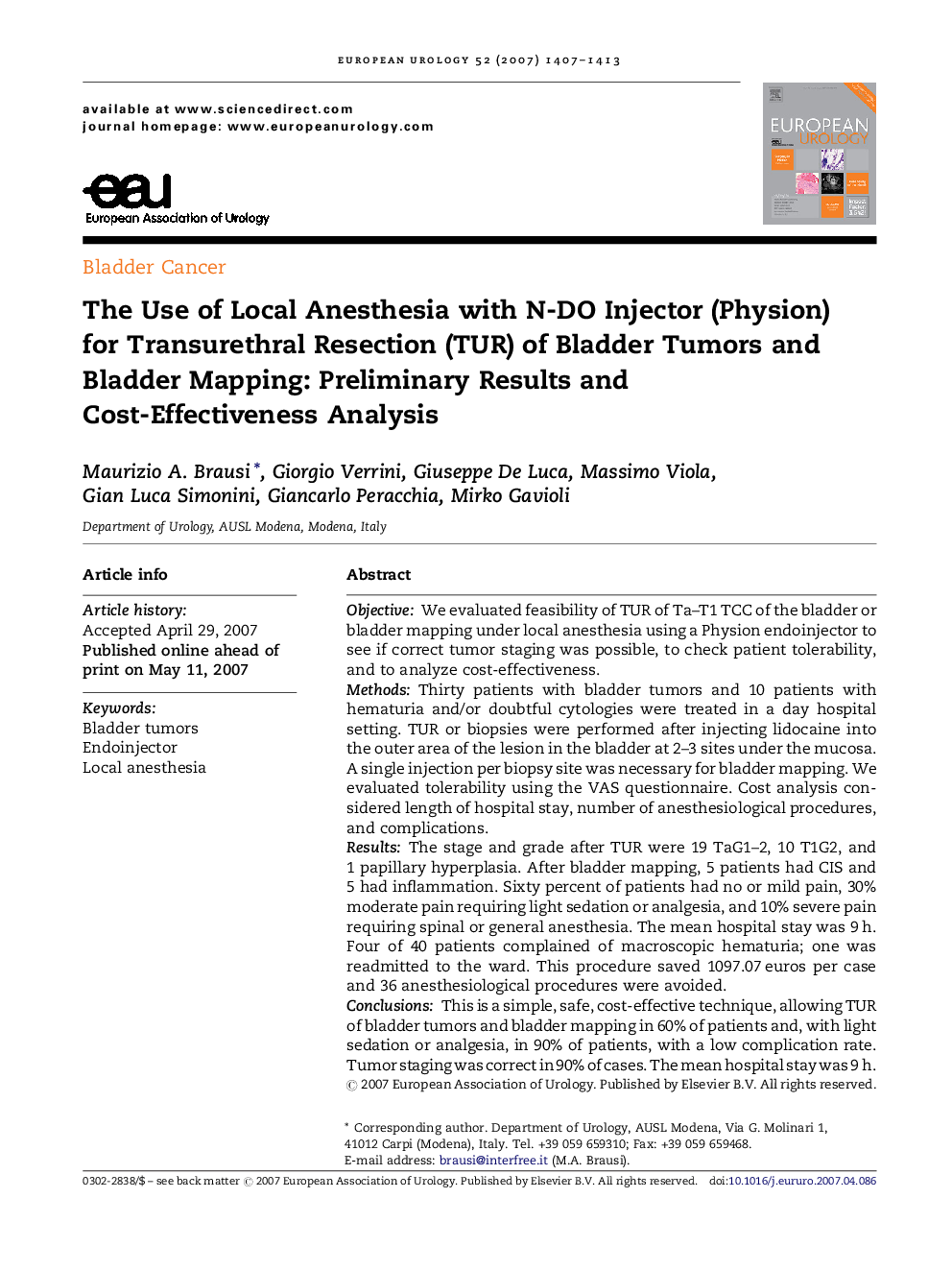| Article ID | Journal | Published Year | Pages | File Type |
|---|---|---|---|---|
| 3927919 | European Urology | 2007 | 7 Pages |
ObjectiveWe evaluated feasibility of TUR of Ta–T1 TCC of the bladder or bladder mapping under local anesthesia using a Physion endoinjector to see if correct tumor staging was possible, to check patient tolerability, and to analyze cost-effectiveness.MethodsThirty patients with bladder tumors and 10 patients with hematuria and/or doubtful cytologies were treated in a day hospital setting. TUR or biopsies were performed after injecting lidocaine into the outer area of the lesion in the bladder at 2–3 sites under the mucosa. A single injection per biopsy site was necessary for bladder mapping. We evaluated tolerability using the VAS questionnaire. Cost analysis considered length of hospital stay, number of anesthesiological procedures, and complications.ResultsThe stage and grade after TUR were 19 TaG1–2, 10 T1G2, and 1 papillary hyperplasia. After bladder mapping, 5 patients had CIS and 5 had inflammation. Sixty percent of patients had no or mild pain, 30% moderate pain requiring light sedation or analgesia, and 10% severe pain requiring spinal or general anesthesia. The mean hospital stay was 9 h. Four of 40 patients complained of macroscopic hematuria; one was readmitted to the ward. This procedure saved 1097.07 euros per case and 36 anesthesiological procedures were avoided.ConclusionsThis is a simple, safe, cost-effective technique, allowing TUR of bladder tumors and bladder mapping in 60% of patients and, with light sedation or analgesia, in 90% of patients, with a low complication rate. Tumor staging was correct in 90% of cases. The mean hospital stay was 9 h.
